EnerGeo Alliance Positions
The Energy Geoscience Industry’s Role in the Energy Evolution:
The EnerGeo Alliance recognizes the importance of environmental stewardship and the integral part the energy geoscience industry plays in responding to the potential global health and safety risks associated with a dynamic climate.
Learn more.
Carbon Capture, Utilization, and Storage:
Carbon Capture, Utilization, and Storage (CCUS) is a process through which carbon dioxide emissions from man-made or anthropogenic point sources can be effectively re-used productively or stored so that they do not enter the atmosphere.
Learn more.
Greenhouse Gas Emissions (GHG) from Marine Geophysical Operations:
Marine geophysical operations are carried out to explore for hydrocarbons, delineate Exclusive Economic Zones, survey the seabed for the placement of infrastructure (e.g. wind turbines) as well as identify and monitor carbon capture and storage facilities. Such operations are a key first stage in the development of both hydrocarbon-based and alternative energy developments in the marine environment. As with any industrial activity, greenhouse gas (GHG) emissions result from powering the specialized vessels required to carry out these operations, and vessel activities are the main contributors in calculating the sector’s overall GHG emissions.
Learn more.
Closure Areas:
The EnerGeo Alliance and the energy geoscience industry are committed to conducting operations in an environmentally responsible manner.
Learn more.
Cumulative Impacts:
The notion of cumulative impacts relating to seismic surveys and exploration activities has been raised in various jurisdictions around the world as something which must be accounted for in exploration access. The best available data strongly support a conclusion that there is an extremely low likelihood that cumulative impacts result from seismic survey activity.
Learn more.
Dolphins & Shutdowns:
The EnerGeo Alliance does not support dolphin shutdowns and encourages exemptions for all dolphin species regardless of whether a dolphin is attempting to bow-ride.
Learn more.
Precaution and The Precautionary Principle:
The EnerGeo Alliance recognizes the complexities and uncertainties inherent in marine environmental management and supports appropriate measures to minimize potential and actual risks.
Learn more.
Zooplankton:
The EnerGeo Alliance remains open to all emerging new scientific information. However, we are troubled with the results of the most recent zooplankton study by McCauley et al. which suggests but does not prove the conclusion that seismic survey air sources negatively impact zooplankton.
Learn more.
Seismic & Fisheries:
Marine seismic surveys have been conducted since the 1950s, and experience shows that fisheries and seismic activities can and do coexist. There has been no observation of direct physical injury or death to free-ranging fish caused by seismic survey activity.
Learn more.
EnerGeo Alliance Industry ESG Statement:
The success and growth of the energy geoscience industry is dependent on EnerGeo Alliance members conducting operations in a responsible, sustainable and transparent manner.
Learn More
Mitigation Measures:
Mitigation measures are implemented to reduce real threats to marine species. The EnerGeo Alliance supports seismic survey mitigation measures that are grounded in the best available science and consistent with existing practices that are proven to be effective and operationally feasible.
Learn more.
Duplicative Surveys:
There is a misunderstanding that seismic surveys covering the same geographical areas are in some way “duplicative” or overlapping, suggesting that these surveys are not necessary or the number can be “reduced” in some form by sharing data. On the contrary, there is no such thing as a duplicative survey.
Learn more.
Time Sharing:
The EnerGeo Alliance has established time sharing best practices to provide guidance to the energy geoscience industry for efficiently and effectively engaging in time sharing when marine seismic crews are in close proximity of each other and are faced with potential seismic interference, environmental restrictions, adverse weather, permit restrictions, or other similar obstacles that may impede simultaneous operations.
Learn more.
Vessel Beaching:
The EnerGeo Alliance encourages members to explore alternative decommissioning options consistent with environmental best practices.
Learn more.
Vessel Separation Distances:
Various countries have proposed draft regulations requiring minimum separation distances or “buffer zones” between seismic survey vessels as a purported mitigation tool that would create corridors for marine mammals to travel.
Learn more.
Lowest Practicable Source Levels (LPSL):
The EnerGeo Alliance cautions against implementation of seemingly simple solutions like striving for lower practicable source levels which can have unintended negative consequences and should be fully thought out when making any decisions about array design.
Learn more.
Sound Source Verification:
Sound Source Verification (SSV) is intended to verify modeled predictions of how anthropogenic sound, including that produced by seismic survey sources, propagates in the environment.
Learn more.
Emerging Geophysical Sound Source Technologies:
Emerging technologies should be driven by market forces, and EnerGeo Alliance opposes any requirement by regulators to use a given technology for conducting geophysical and geological surveys.
Learn more.


